GitHub Copilot Certification
GitHub Copilot Basics
Microsofts Six Principles of Responsible AI
In this guide, we explore Microsoft’s Responsible AI framework—six foundational principles designed to ensure ethical, trustworthy, and human-centric AI. Together, they provide a practical blueprint for building AI systems that are fair, reliable, secure, inclusive, transparent, and accountable.
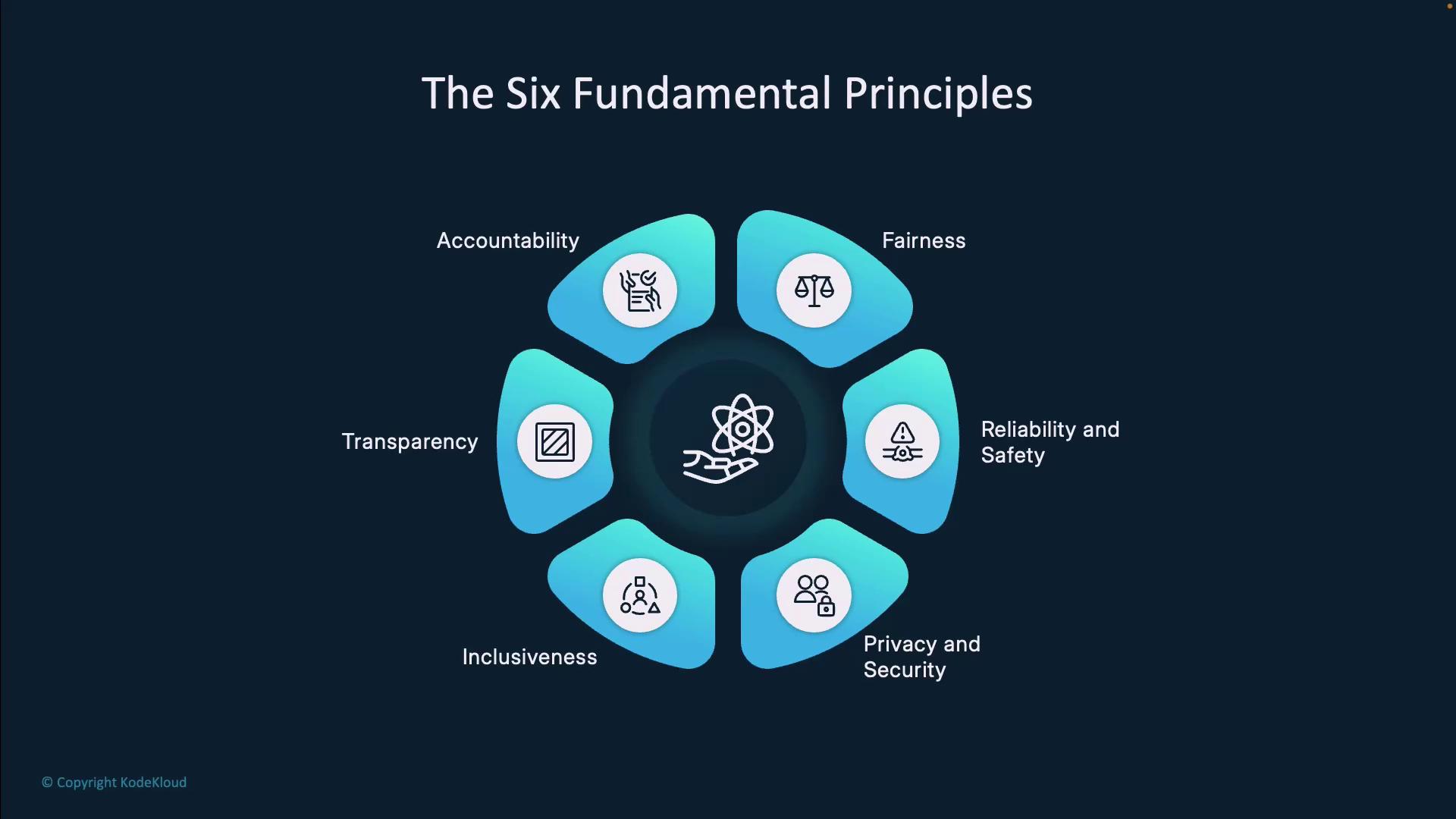
These guardrails help you design AI solutions—like GitHub Copilot—that align with industry best practices and Microsoft’s ethical standards.
1. Fairness
Fairness ensures AI treats all users equitably, avoiding systematic bias. In GitHub Copilot, this means consistent, impartial code suggestions regardless of a developer’s background or chosen language.
Key objectives:
- Provide consistent recommendations across similar use cases
- Detect and mitigate bias against specific groups
- Amplify human capabilities without discrimination
Implementation methods:
| Method | Description |
|---|---|
| Training Data Review | Identify and remove biased samples |
| Balanced Demographic Testing | Evaluate model outputs across diverse user segments |
| Adversarial Debiasing | Apply techniques to counteract learned biases |
| Performance Monitoring | Track model behavior and user feedback continuously |
| Override Controls | Allow users to flag or override unfair suggestions |
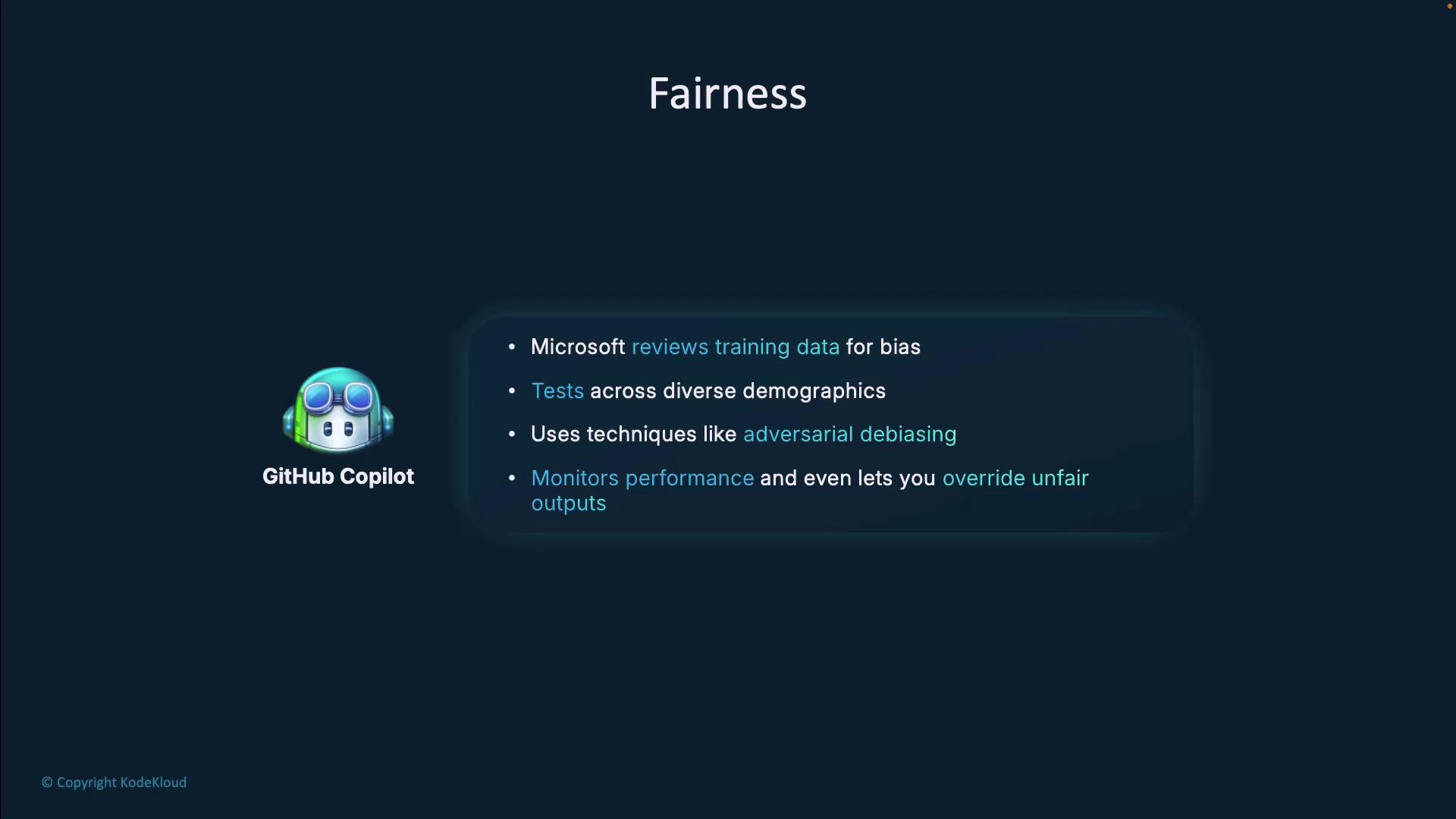
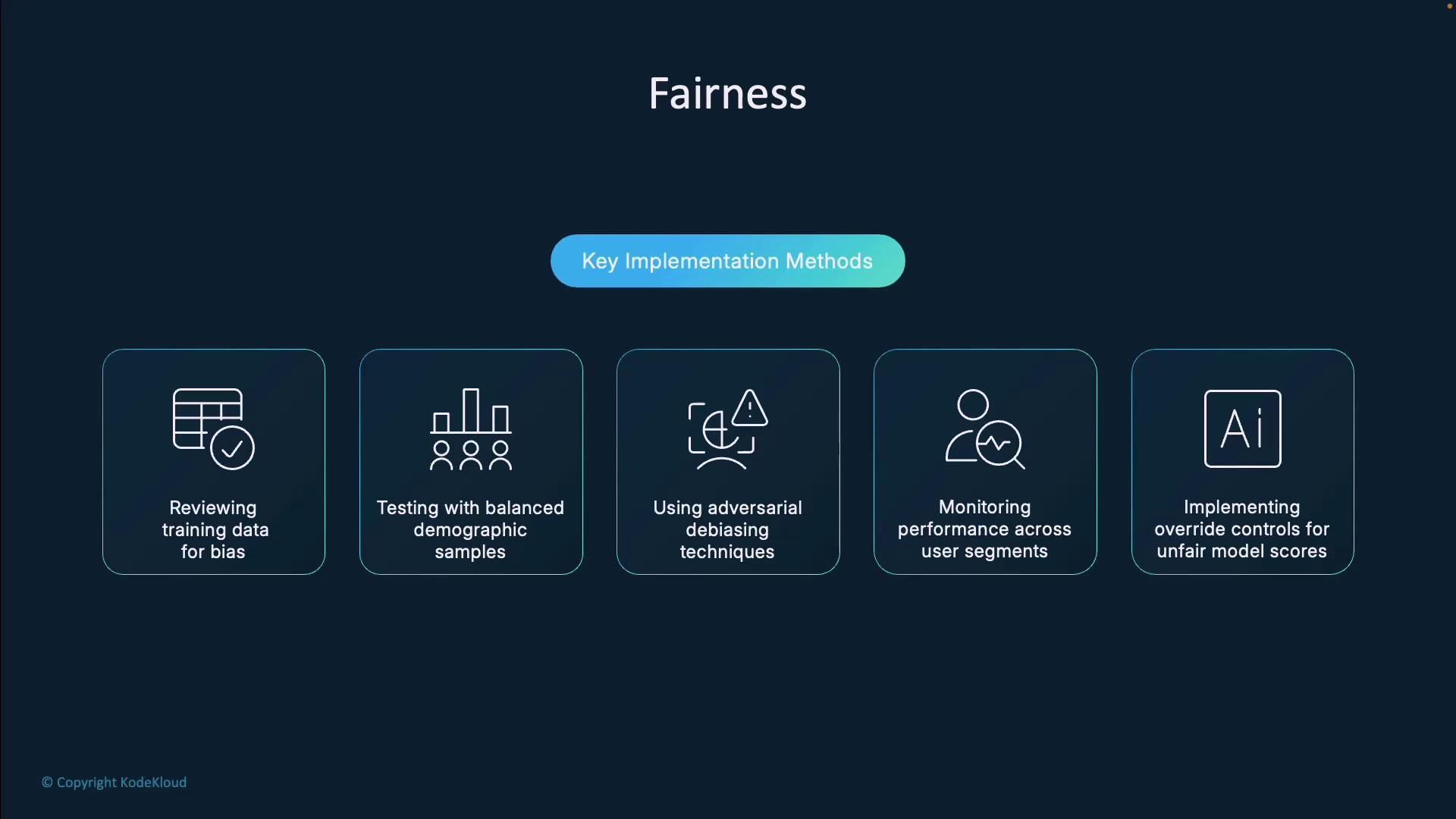
2. Reliability and Safety
Reliability and safety guarantee that AI systems perform predictably and minimize risks. For Copilot, this involves rigorous testing against edge cases, resilient design that thwarts malicious inputs, and adherence to secure coding standards.
Warning
Malicious inputs can exploit AI models. Always validate and sanitize user-provided code snippets before execution.
Best practices include:
- Static analysis and fuzz testing
- Secure software development lifecycle (SSDLC)
- Resilience to adversarial attacks
- Fault-tolerant architectures
3. Privacy and Security
Protecting user data is non-negotiable. Copilot leverages Azure’s encryption and hardware security modules (HSMs) to keep code and usage patterns safe.
![]()
| Pillar | Key Practices |
|---|---|
| Data Collection | - Obtain explicit consent<br>- Collect only essential data<br>- Monitor inputs for privacy |
| Security Measures | - Encryption in transit & at rest<br>- Hardware Security Modules (HSMs)<br>- Azure key vaults<br>- Envelope encryption<br>- Regular security audits |
| Anonymization | - Pseudonymization (artificial IDs)<br>- Aggregation to obscure individual entries |
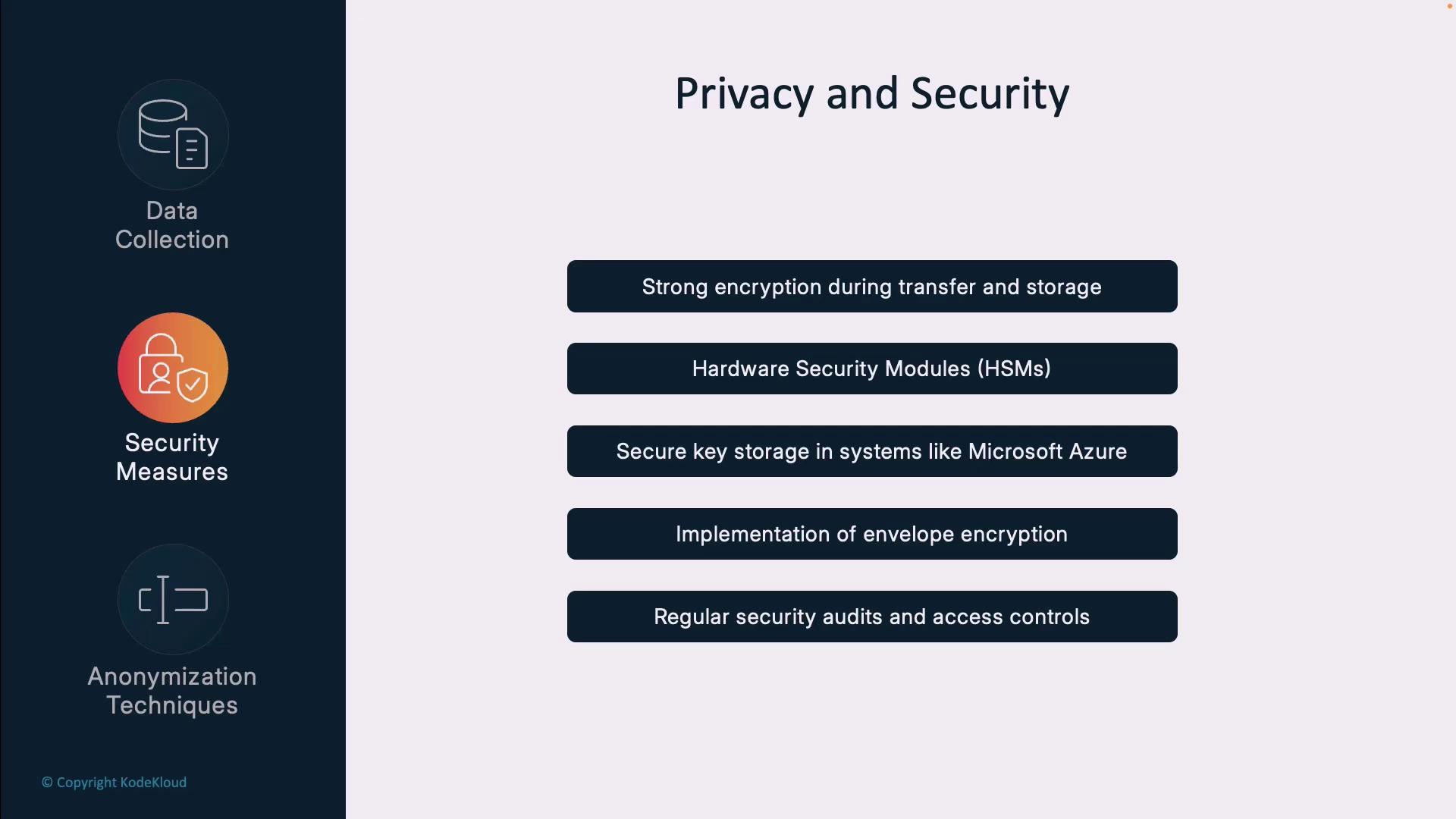
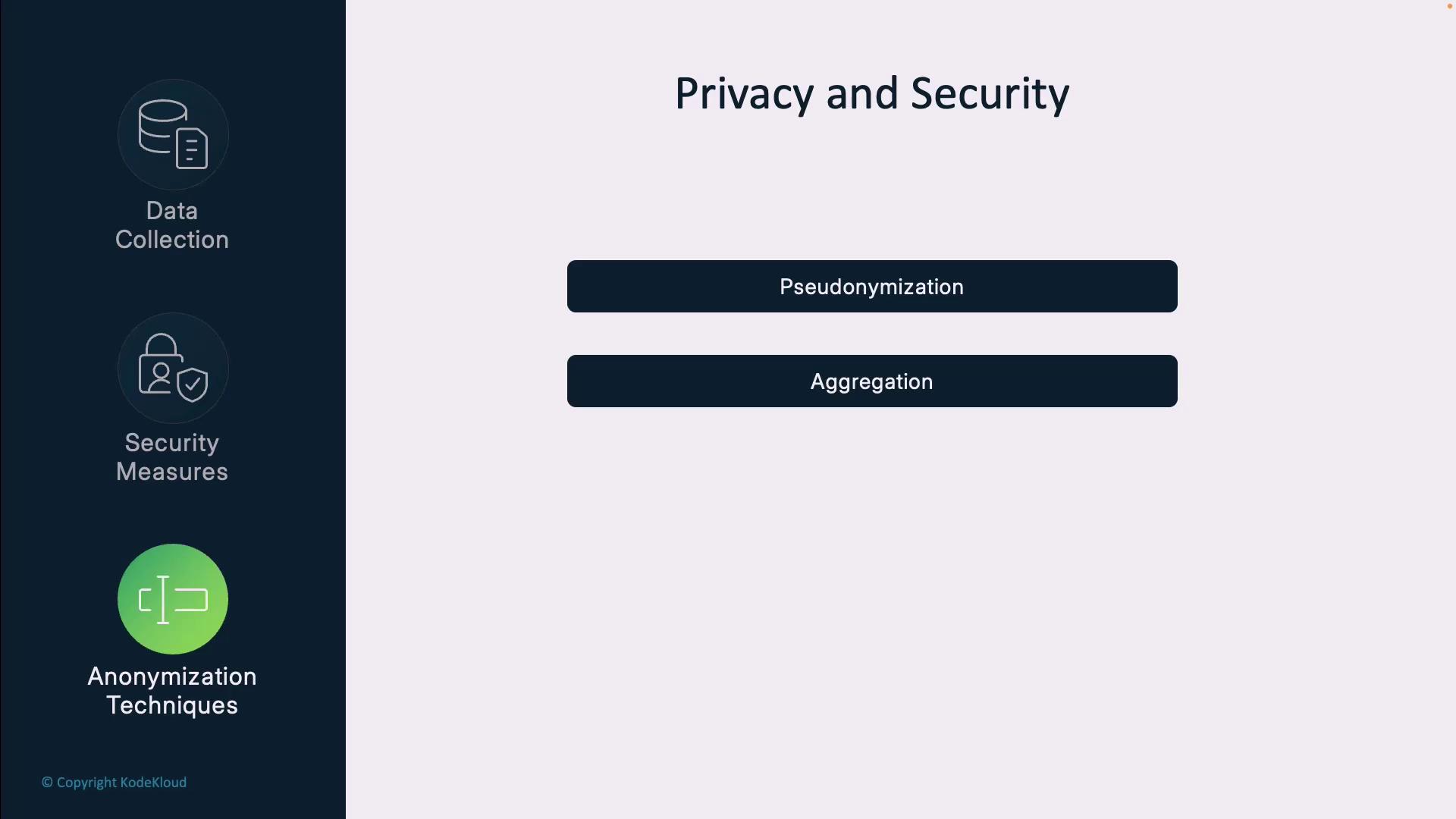
4. Inclusiveness
Inclusiveness ensures AI benefits everyone—regardless of ability, location, or background. Copilot supports accessibility (screen readers, keyboard navigation), offline usage, and adapts to regional coding conventions.
Key focus areas:
- Assist developers with disabilities
- Provide offline & low-bandwidth modes
- Solicit feedback from diverse communities
- Integrate cross-demographic heuristics
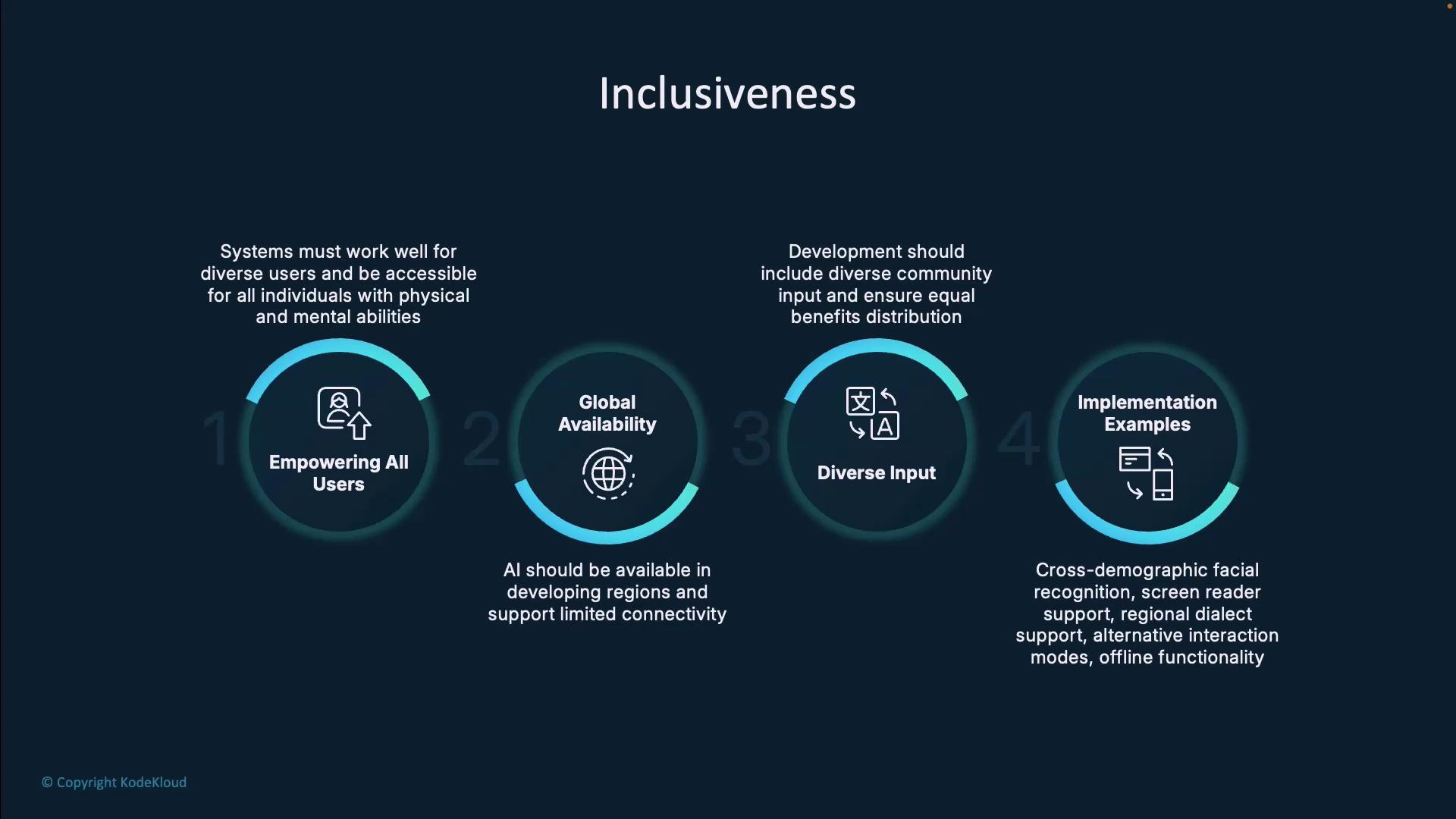
5. Transparency
Transparency builds trust by revealing how AI models make decisions. Copilot offers interactive explanations, debugging tools, and dashboards so developers can trace suggestions back to their data sources.
Core components:
- Interpretable algorithms and clear decision paths
- Justification of model design choices
- Open communication of capabilities & limitations
- Audit logs for data flows and model updates
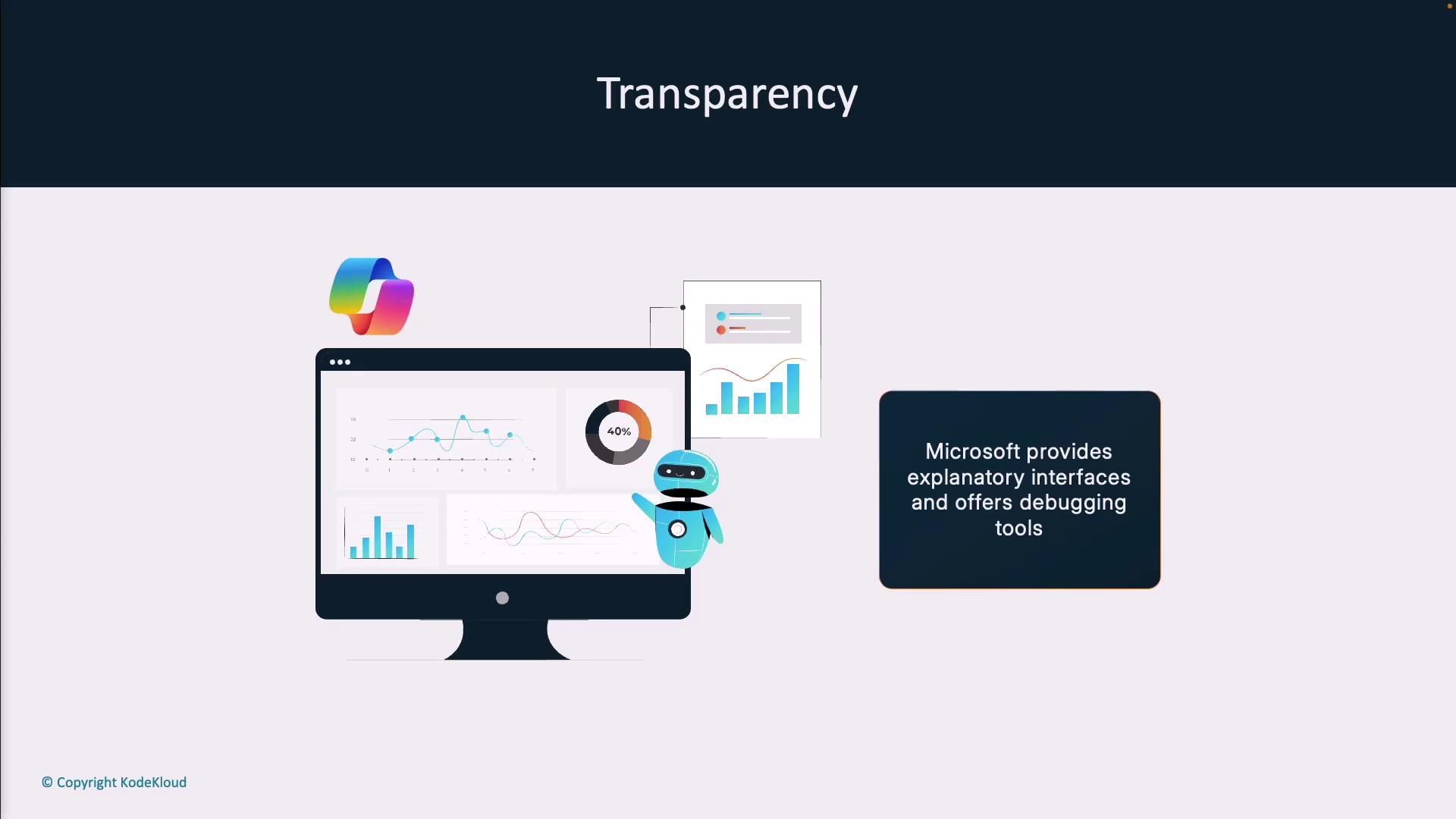
6. Accountability
Accountability assigns clear ownership for AI outcomes. Organizations should define roles, monitor system performance, conduct audits, and address harms promptly.
Best practices:
- Governance frameworks with role-based responsibilities
- Continuous risk assessments and KPIs
- Scheduled security, privacy, and ethics audits
- Incident response plans for algorithmic misbehavior
Microsoft maintains ongoing oversight of Copilot—regularly auditing, updating, and taking responsibility for any unintended consequences.
Summary
Below is a recap of Microsoft’s six Responsible AI principles as applied in GitHub Copilot:
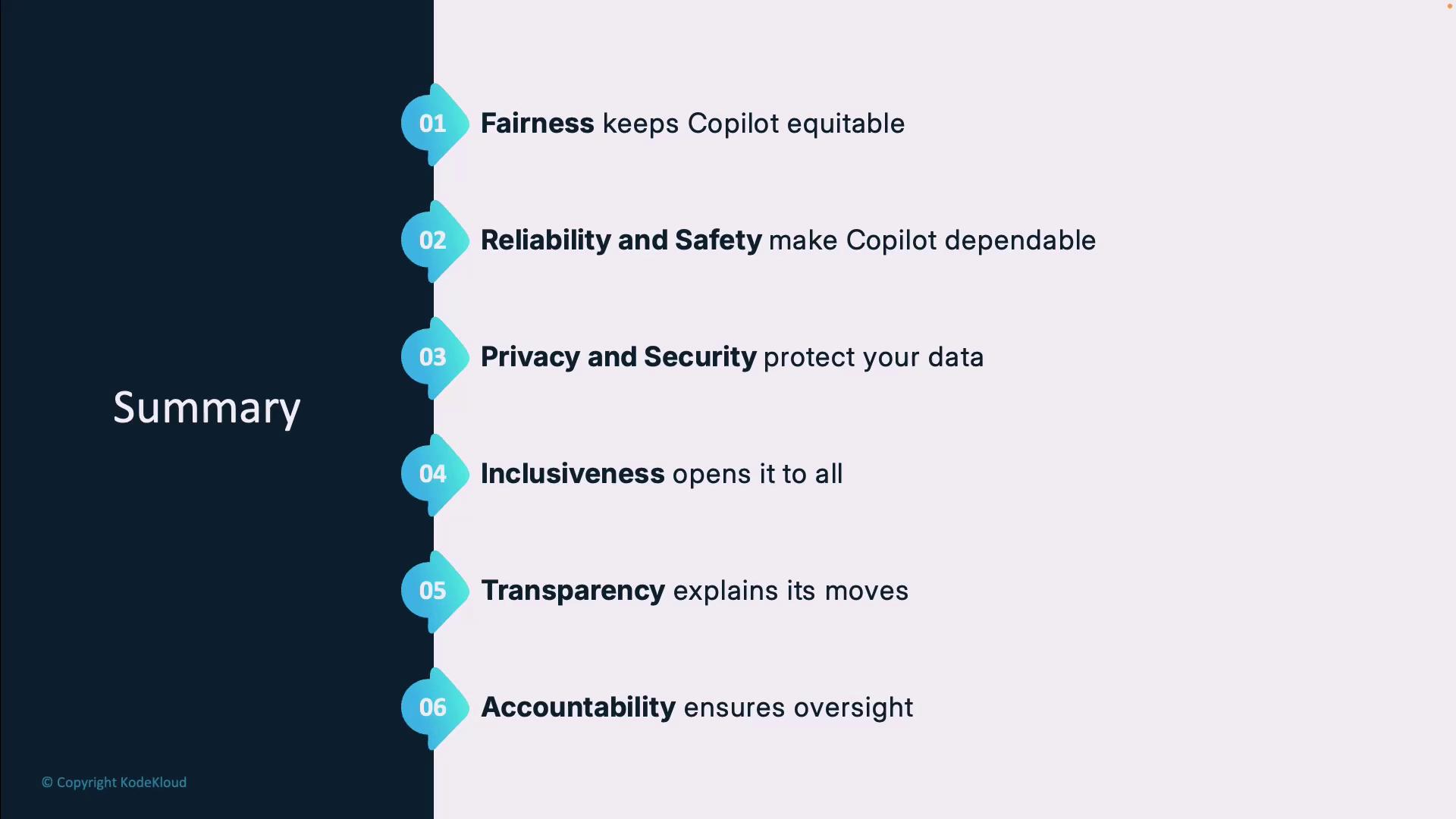
- Fairness – Deliver unbiased, equitable code suggestions
- Reliability and Safety – Ensure predictable, secure outputs
- Privacy and Security – Safeguard code and user data
- Inclusiveness – Enable access for all developers
- Transparency – Provide clear explanations & audit trails
- Accountability – Maintain governance and rapid remediation
Together, these principles form the cornerstone of a responsible AI framework—crucial for ethical AI implementation and certification preparation.
Links and References
Watch Video
Watch video content